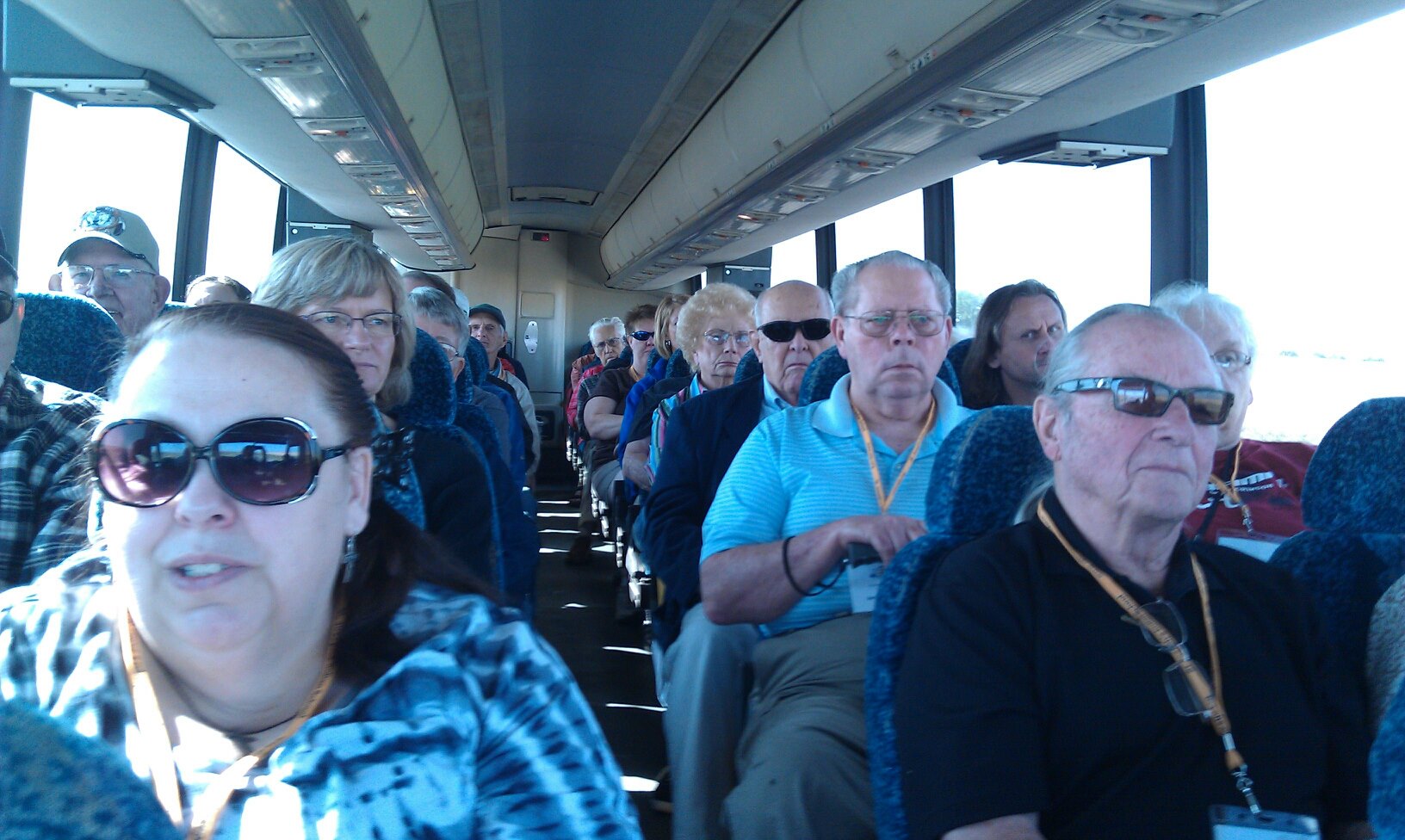
Donors started arriving last evening to get their powwow information packets in preparation for our activity-packed event. Many have come from long distances out-of-state. For some, it is their first trip to South Dakota. Because our donors ask many questions and want to learn more about our area, we tried something new this year – a bus tour of the Crow Creek and Lower Brule Indian Reservations.
We had room for 50 guests, and interest was very high. We filled up right away and couldn’t take any more sight seers. John, a St. Joseph’s alumnus who grew up in Crow Creek, served as our tour guide. While on the road, he mixed historical and cultural background with corny humor to educate and entertain.
Our first stop was St. Joseph’s Catholic Church in Fort Thompson. We had coffee, juice and rolls, and a chance to ask questions of Sister Charles, who has worked with Native people for over 50 years, and Deacon Steve, a Lakota from the Standing Rock Indian Reservation who now ministers in the community.
Our next stop was a set of flags set against the magnificent view of the Missouri River at the Big Bend Dam. They surround a medicine wheel that commemorates the 38 Dakota warriors who were executed by hanging during the 1852 Minnesota Uprising. The surviving family members were sent to Fort Thompson, hundreds of miles from their home and many died during the ensuing harsh winter. A sad piece of history, but one that puts perspective on the trauma people are still working to overcome.
Reservation life has a complexity to it. In Lower Brule, folks commented on housing conditions, with many small houses obviously in need of repair. Yet, they also saw efforts at economic development. Able to use water from the Missouri to irrigate, the Lower Brule farm cooperative is one of the largest producers of popcorn in the country. A few years ago the tribe decided that instead of just wholesaling the popcorn to agribusiness, they would develop their own brand (Lakota Popcorn) and add some jobs to their local economy by packaging and marketing it themselves. We also saw a small arts and craft store where workers produced items made of elk and buffalo hide and other local materials.
Our lunch stop included a hearty and tender buffalo stew, which folks seemed to enjoy.
The last stop was the tribal council chamber, and folks commented on the beautiful architecture. The room is in the shape of a large tipi. Out the window overlooking the pasture, they could see the tribe’s buffalo herd grazing in the distance. What impressed me the most was the quality of questions our donors asked – about treaty rights and trust issues, self-determination and the Bureau of Indian Affairs. The people who came our way proved very passionate about Native American issues.
A few people, myself included, nodded off for a few winks on the half hour ride back home. The tour got high marks, and we think it’s a keeper for our powwow schedule.

